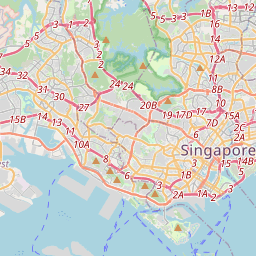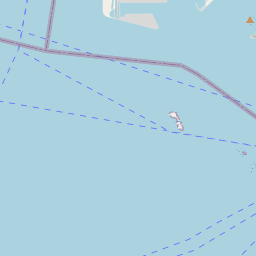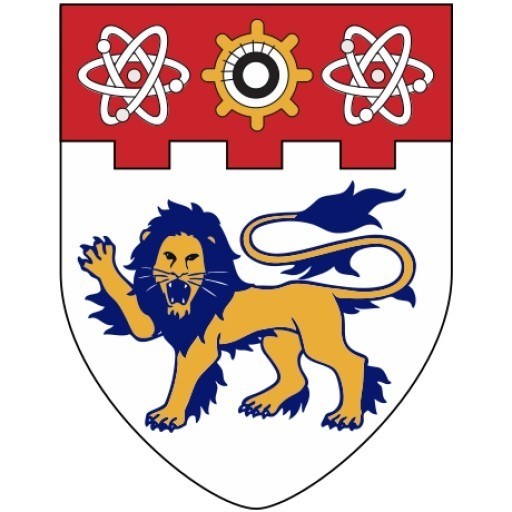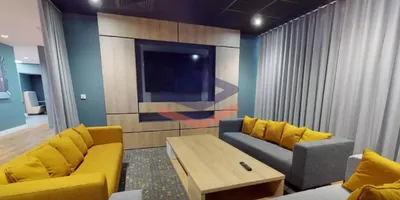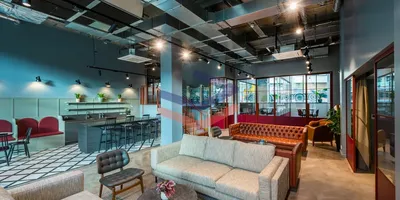Photos of university / #ntu_sg
Nanyang Technological University (NTU) is one of Singapore’s leading institutions of higher learning and is consistently ranked among the top universities in the world. Established in 1991, NTU has rapidly grown into a globally recognized research-intensive university known for its excellence in science, engineering, business, and the humanities. The university is home to a diverse community of students, faculty, and researchers from around the world, fostering an environment of innovation and academic excellence.
NTU’s lush, green campus spans 200 hectares, making it one of the largest university campuses in Singapore. The university is known for its state-of-the-art facilities, including the iconic Hive building, which features a unique eco-friendly design, and the School of Art, Design and Media, which boasts a distinctive grass-covered roof. NTU is also home to cutting-edge research centers such as the Earth Observatory of Singapore and the Energy Research Institute, which contribute to advancements in sustainability, artificial intelligence, and biomedical sciences.
The university offers a wide range of undergraduate and postgraduate programs across its various colleges, including the College of Engineering, College of Science, Nanyang Business School, College of Humanities, Arts, and Social Sciences, and the Lee Kong Chian School of Medicine. NTU’s strong emphasis on interdisciplinary learning and research has led to numerous collaborations with leading global institutions, including Imperial College London and the Massachusetts Institute of Technology.
NTU is also known for its commitment to sustainability and smart campus initiatives. The university has been recognized as one of the world’s most beautiful and environmentally friendly campuses, with numerous green buildings and initiatives aimed at reducing its carbon footprint. NTU’s Smart Campus vision integrates digital technologies to enhance learning, research, and campus operations, making it a model for future universities.
With a strong focus on innovation and entrepreneurship, NTU has nurtured numerous startups and industry partnerships, providing students with opportunities to engage in real-world problem-solving. The university’s vibrant student life, world-class faculty, and cutting-edge research make it a top choice for students seeking a transformative educational experience in Singapore and beyond.
-
School of Art, Design and Media
With Singapore being a cosmopolitan nation with Asian sensibilities, the School of Art, Design and Media (ADM) seeks to play a weighty role in transforming the island state into a global media city.
Our inter-disciplinary courses are designed to mould creative individuals into outstanding artists, designers, animators, new media performers and even business leaders.
In essence, we liberate imaginative minds to unleash breakthrough design as an integral part of life.
ADM students explore the form and function of designed communication, objects and products, new entertainment content, artistic expression and interactive experiences. Each programme maintains an intellectual and scholarship focus balanced with a “hands-on” studio practice.
Students work under a directed problem-solving method. We challenge students to be independent thinkers.
We also understand creative minds learn best in an environment that fosters participation and inclusiveness while stimulating their abilities. This is the thinking behind our problem-solving approach in our programmes, where students are taught to use design and creative process to research strategic solutions to today’s complex problems.
The school is equipped with exceptional hands-on studios digital creation laboratories, media studios, and open spaces that industry practitioners themselves use in their creative work.
Graduates are prepared to undertake professional posts in top design firms, create entrepreneurial enterprises in design, or go on further study in doctoral programmes in design.
ADM’s long-term plan is to focus on nurturing local talents and providing opportunities for international study and education at a world class standard.
The students are in good hands – ADM’s international faculty is a collective of talented, dedicated arts, design and media practitioners who have been picked for their extensive backgrounds in their fields of expertise.
They are a part of the University’s 2,600-strong teaching and research staff from more than 40 countries and who bring years of solid industry experience.
NTU is an internationally reputed research-intensive tertiary institution – the Times Higher Education-QS World University Rankings 2008 placed it among the world’s top 100 universities.
The university’s comprehensive education covers science and technology, business, arts humanities and social sciences, entrepreneurial and leadership skills to prepare students for the global enterprise environment.
NTU has four colleges with 12 schools. It also has three autonomous entities – the National Institute of Education (NIE), the S Rajaratnam School of International Studies, and the Earth Observatory of Singapore.
The university has produced top scholars and international Olympiad medallists from the region and beyond.
Outstanding students are encouraged to go on overseas exchange programmes and to take up internship and professional attachment opportunities. NTU’s Global Immersion Programme sends students to top design and media schools in universities in Australia, China, India, the UK and the US for stints lasting from six months to a year.
With NTU”s core strength in engineering, NIE’s in pedagogy and ADM’s in content and design, the time is right for ADM to harness its expertise and launch its Doctor of Philosophy programmes in 2011-2012.
ADM is a new school, but the ambition of the faculty is making its teaching approach the best in Asia. Our innovative methods have allowed us to adapt to the fast-changing world with an unlimited space to grow.
Enrol at ADM and experience the buzz for yourself. Be ready to awaken the creativity within.
Nanyang Technological University (NTU) is one of Singapore’s leading universities, known for its excellence in education, research, and innovation. NTU traces its roots back to 1955 when Nanyang University (Nantah) was established as the first Chinese-language university in Southeast Asia. However, due to changes in Singapore’s education policies, Nanyang University merged with the University of Singapore in 1980 to form the National University of Singapore (NUS).
In 1981, the Singapore government established Nanyang Technological Institute (NTI) on the grounds of the former Nanyang University to address the country’s growing need for engineers and technical professionals. NTI quickly gained recognition for its strong engineering programs and industry partnerships. In 1991, NTI was restructured and officially became Nanyang Technological University (NTU), incorporating the National Institute of Education (NIE), which remains a key part of NTU today.
Since its establishment, NTU has expanded beyond engineering to become a comprehensive research-intensive university. It now offers programs in business, science, humanities, arts, and social sciences. The university is home to several world-renowned institutions, including the Nanyang Business School, the College of Engineering, and the Lee Kong Chian School of Medicine, which was established in collaboration with Imperial College London.
NTU has consistently ranked among the world’s top universities. It is recognized for its cutting-edge research in artificial intelligence, sustainability, and biomedical sciences. The university’s Smart Campus initiative integrates digital technologies and sustainability efforts to create a modern learning environment.
Today, NTU continues to be a global leader in education and research, attracting students and faculty from around the world. Its commitment to innovation and interdisciplinary collaboration ensures that it remains at the forefront of academic and technological advancements.
Admission Requirements and Application Process for Nanyang Technological University (NTU), Singapore
Nanyang Technological University (NTU) is one of the leading universities in Asia, attracting students from all over the world. The admission requirements and application process vary depending on the level of study (undergraduate or postgraduate) and the applicant’s academic background.
Undergraduate Admissions
For undergraduate programs, NTU considers applicants based on their academic qualifications, standardized test scores, and other relevant criteria. The general requirements include:
- Academic Qualifications: Applicants must have completed high school or an equivalent qualification recognized by NTU. International students must meet the specific entry requirements based on their country’s education system.
- English Language Proficiency: Since English is the medium of instruction, applicants whose first language is not English may need to provide proof of proficiency through tests such as TOEFL or IELTS.
- Standardized Tests: Some programs may require SAT, ACT, or other standardized test scores.
- Subject-Specific Requirements: Certain programs, especially in engineering, science, and business, may have specific subject prerequisites.
- Personal Statement and References: Some programs may require a personal statement or recommendation letters.
Postgraduate Admissions
For master's and PhD programs, the requirements vary by faculty and program. However, general requirements include:
- Bachelor’s Degree: Applicants must hold a relevant undergraduate degree from a recognized institution.
- GPA Requirements: A strong academic record is required, with some programs specifying a minimum GPA.
- English Proficiency: Non-native English speakers may need to submit TOEFL or IELTS scores.
- GRE/GMAT Scores: Some programs, particularly in business and engineering, may require GRE or GMAT scores.
- Work Experience: Certain professional programs, such as MBA, may require relevant work experience.
- Research Proposal: For PhD applicants, a well-defined research proposal is often required.
Application Process
The application process for NTU typically involves the following steps:
- Online Application: Applicants must submit their applications through NTU’s online portal.
- Submission of Documents: Required documents include academic transcripts, standardized test scores, personal statements, and recommendation letters.
- Application Fee: A non-refundable application fee must be paid.
- Interviews: Some programs may require an interview as part of the selection process.
- Admission Decision: Successful applicants will receive an offer letter, which they must accept within the given deadline.
NTU has specific application deadlines depending on the program and applicant’s nationality. International students should also check visa requirements and financial aid options.
For the most accurate and up-to-date information, applicants should visit NTU’s official website.
Nanyang Technological University (NTU) is one of Singapore’s leading universities and is globally recognized for its academic excellence, research contributions, and strong industry partnerships. NTU is accredited by the Ministry of Education (MOE) of Singapore and is a member of various international academic organizations. The university consistently ranks among the top institutions worldwide, reinforcing its reputation for high-quality education and research.
NTU’s business school, Nanyang Business School (NBS), holds prestigious accreditations from the Association to Advance Collegiate Schools of Business (AACSB) and the European Quality Improvement System (EQUIS). These accreditations signify that NBS meets the highest standards of business education globally. AACSB accreditation is awarded to less than 5% of the world’s business schools, highlighting NTU’s commitment to excellence in business education. EQUIS accreditation further ensures that the business programs maintain a strong international focus and high academic quality.
In the field of engineering, NTU’s College of Engineering is recognized for its rigorous academic programs and research initiatives. The university is a member of the Global Engineering Education Exchange (GE3) program, which allows students to participate in international exchange programs with other top engineering institutions. NTU’s engineering programs are also accredited by the Institution of Engineers Singapore (IES), ensuring that graduates meet professional engineering standards.
NTU’s School of Computer Science and Engineering (SCSE) is highly regarded for its contributions to artificial intelligence, cybersecurity, and data science. The university collaborates with leading technology companies and research institutions worldwide, further enhancing its academic and research credentials. NTU’s computer science programs are aligned with international accreditation standards, ensuring that graduates are well-prepared for careers in the rapidly evolving tech industry.
In addition to its academic accreditations, NTU is a member of the Association of Pacific Rim Universities (APRU) and the ASEAN University Network (AUN). These memberships reflect NTU’s commitment to fostering international collaboration and academic excellence. The university is also recognized by the QS World University Rankings and the Times Higher Education (THE) World University Rankings, consistently placing among the top universities globally.
NTU’s medical school, the Lee Kong Chian School of Medicine (LKCMedicine), is jointly established with Imperial College London. This partnership ensures that the medical programs adhere to international accreditation standards and provide students with a world-class medical education. LKCMedicine is accredited by the Singapore Medical Council (SMC), ensuring that graduates meet the necessary qualifications to practice medicine in Singapore.
Overall, NTU’s accreditations and global rankings demonstrate its commitment to providing high-quality education, conducting cutting-edge research, and maintaining strong industry connections. The university’s recognition by international accreditation bodies ensures that its graduates are well-equipped for successful careers in various fields.
Nanyang Technological University (NTU) offers a vibrant and dynamic student life, providing numerous opportunities for academic, social, and personal growth. The university is home to a diverse student body, with individuals from various cultural backgrounds, creating a rich and inclusive environment.
One of the key aspects of student life at NTU is the wide range of student organizations and clubs. There are over 200 student clubs covering interests such as sports, arts, culture, and academics. Whether students are interested in joining a dance club, a debate society, or a robotics team, there is something for everyone. These clubs provide a great way to meet new people, develop leadership skills, and engage in extracurricular activities.
NTU also has excellent residential facilities, with on-campus housing available for both undergraduate and graduate students. The halls of residence offer a strong sense of community, with various events and activities organized throughout the year. Living on campus allows students to experience university life fully, fostering friendships and collaboration among peers.
Sports and recreation are an integral part of student life at NTU. The university has state-of-the-art sports facilities, including swimming pools, gyms, and sports halls. Students can participate in various sports, from basketball and football to badminton and rock climbing. NTU also has competitive sports teams that represent the university in inter-university competitions.
In addition to extracurricular activities, NTU provides numerous support services to enhance student well-being. The university offers career counseling, mental health support, and academic assistance to ensure students have a fulfilling and successful university experience. The campus is also equipped with modern libraries, study spaces, and dining options, making it a comfortable and conducive environment for learning.
NTU’s location in Singapore further enhances student life, as the city offers a mix of cultural, entertainment, and career opportunities. Students can explore the vibrant city, visit museums, enjoy local cuisine, and participate in various events and festivals. The university also has strong industry connections, providing students with internship and networking opportunities to prepare for their future careers.
Overall, student life at NTU is a well-rounded experience that combines academic excellence with a lively and engaging campus environment. With numerous opportunities for personal and professional development, students at NTU can make the most of their university years while preparing for a successful future.
Nanyang Technological University (NTU) offers a wide range of services and facilities to support students beyond lectures and seminars. The university provides modern libraries, including the Lee Wee Nam Library, which offers extensive academic resources, study spaces, and digital access to research materials. Additionally, NTU has multiple computer labs and IT support services to assist students with their technological needs.
For student well-being, NTU offers health and wellness services, including a medical center that provides consultations, vaccinations, and counseling services. The university also has a dedicated mental wellness team to support students facing stress or personal challenges.
NTU provides various sports and recreational facilities, including a fully equipped gym, swimming pools, and courts for basketball, tennis, and badminton. The Sports and Recreation Centre organizes fitness programs and sports events to encourage a healthy lifestyle.
On-campus accommodation is available for students, with residential halls offering comfortable living spaces, communal areas, and dining options. The halls also organize social and cultural activities to foster a sense of community.
The university supports career development through the Career & Attachment Office, which provides career counseling, internship opportunities, and job placement services. NTU also has entrepreneurship programs and incubators to help students develop business ideas and startups.
Student life at NTU is enriched by numerous clubs and societies, covering interests such as arts, culture, technology, and volunteering. The university also hosts events, workshops, and leadership programs to enhance students' personal and professional growth.
Additionally, NTU offers transportation services, including shuttle buses that connect different parts of the campus, making it convenient for students to move around. The university also has dining halls, cafes, and convenience stores to cater to students' daily needs.
Overall, NTU provides a comprehensive range of facilities and services to ensure students have a well-rounded university experience.
Nanyang Technological University (NTU) in Singapore is one of the world's leading universities, consistently ranked among the top institutions globally. There are several reasons why students should choose NTU for their higher education.
Firstly, NTU is known for its strong emphasis on research and innovation. The university has state-of-the-art research facilities and collaborates with leading global institutions and industries. NTU is home to world-class research centers such as the Earth Observatory of Singapore and the Energy Research Institute.
Secondly, NTU offers a diverse and vibrant campus life. The university has a beautiful, eco-friendly campus with modern infrastructure, including smart classrooms, high-tech laboratories, and sustainable buildings. The campus is also home to The Hive, an iconic learning hub designed to encourage collaborative learning.
Another reason to choose NTU is its strong industry connections. The university has partnerships with major companies such as Rolls-Royce, Alibaba, and BMW, providing students with valuable internship and career opportunities. NTU graduates are highly sought after by employers worldwide.
Additionally, NTU provides a global learning experience. The university has exchange programs with top universities around the world, allowing students to gain international exposure. NTU also attracts a diverse student body, creating a multicultural learning environment.
Finally, NTU is committed to sustainability and innovation. It has been recognized as one of the world’s most beautiful and green campuses. The university integrates sustainability into its curriculum and research, preparing students to tackle global challenges.
With its strong academic reputation, cutting-edge research, excellent industry connections, and vibrant campus life, NTU is an ideal choice for students seeking a world-class education.

